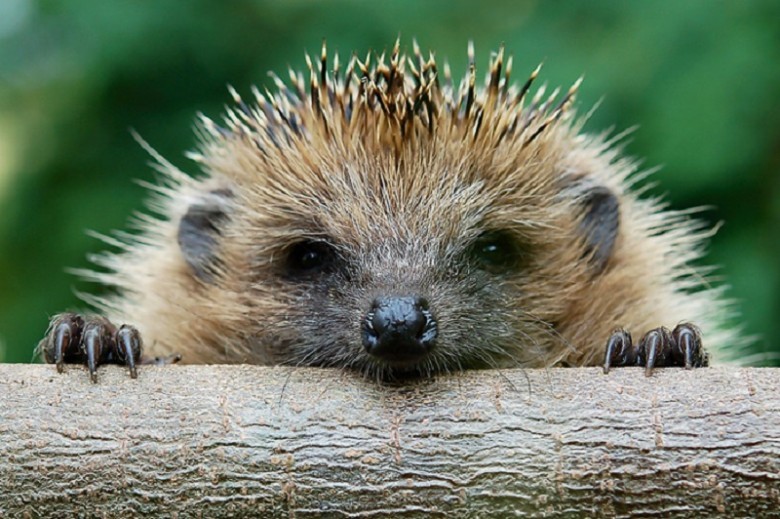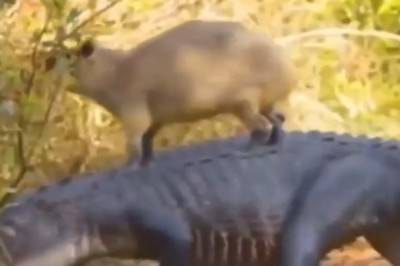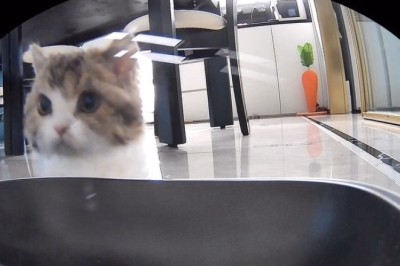
The Plight of the Prickly: Saving Our Hedgehog Population
Hedgehogs are one of nature's most charming creatures, known for their adorable faces and unique spiky defense mechanism. Not long ago, these endearing mammals were common sights in gardens and woodlands, but recent studies have shown a shocking decline. Over the past decade, hedgehog populations in many areas have plummeted by 30%, pushing them into the perilous territory of near extinction. For many, the plight of these little warriors evokes a sense of urgency and responsibility, as we ponder how we might save these creatures that have been companions to both our childhoods and our gardens for generations.
The Decline of the Hedgehog
Once viewed as resilient inhabitants of rural and suburban environments, hedgehogs are now facing increasingly significant challenges. The primary culprits of their decline can be traced back to two formidable foes: urbanization and pesticides.
Urban areas are expanding at an unprecedented rate. Cities are sprawling with new developments, cutting through the hedgehogs' natural habitats and fragmenting their living space. Roads are vital arteries in our modern world, but for hedgehogs, they represent a dangerous barrier that can mean life or death. An alarming number of hedgehogs fall victim to speeding vehicles, their lives snuffed out in an instant, while their habitats shrink around them.

Meanwhile, the use of pesticides has turned seemingly benign gardening practices into another threat to these prickly creatures. As gardeners attempt to maintain insect-free shrubbery, they often resort to chemical solutions that inadvertently poison the very insects hedgehogs rely on for nourishment. Hedgehogs feast on beetles, slugs, and other insects not for their entertainment, but as essential components of their diet. However, the pesticides we use to treat our gardens can leave a trail of destruction that echoes throughout the food web—poisons intended for insects ultimately harm the hedgehogs that consume them.
Living on the Edge of Extinction
Once regarded as an abundant species, hedgehogs now find themselves struggling to survive in an environment that has changed dramatically. Their status has become increasingly precarious. The repercussions of this swift decline echo beyond just the hedgehogs; they represent a broader warning sign of biodiversity loss in our ecosystems. The vivid picture of these once plentiful creatures is fading, potentially leading us into an era where the soft snorts and scurrying of hedgehogs would be nothing more than a treasured memory.
As parents tell their children stories of hedgehogs roaming freely in gardens, many are increasingly fearful that their children may grow up in a world where these endearing animals are mere stories—charismatic characters relegated to the pages of books instead of the greenery of parks and fields. It’s a strike not only against the hedgehogs as species but against the delicate balance of nature that relies on a variety of creatures to maintain health and stability.
How Can We Help?
The call to action is clear: it is imperative that we take steps to protect hedgehogs and their habitats. While the challenges may seem daunting, there are several practical measures we can implement that could significantly aid in the effort to conserve these beloved mammals.
1. Refuse Pesticides
First and foremost, addressing the use of pesticides in gardens is vital. Many of us may not realize the detrimental impact of these chemicals; however, we can choose to protect the environmental balance by employing alternative pest control methods. These alternatives can include natural remedies such as introducing beneficial insects that prey on pests, or using environmentally friendly repellents that do not pose risks to hedgehogs. Organic gardening techniques provide a sustainable option that can protect both your plants and the surrounding wildlife.
2. Create Safe Passageways
When fencing or landscaping properties, we should keep hedgehogs in mind by leaving small access holes. These tiny gateways enable hedgehogs to wander freely between gardens and neighborhoods, maintaining genetic diversity and allowing them access to food sources beyond their immediate area. A well-planned garden could form part of a sprawling network of green spaces that hedgehogs can navigate, ensuring the continuation of their natural behaviors.
3. Build Shelters
Creating safer spaces for hedgehogs serves as a constructive approach to lend them a helping hand. One way to do this is by constructing small shelters or hedgehog houses in your garden made of logs or other natural materials. These structures provide warmth and safety for hedgehogs, especially in times of hibernation. Hedgehogs instinctively seek shelter, and providing them with well-designed homes encourages them to return to areas where they can find food and safety—a small yet significant shift toward rebuilding their population.
4. Raise Awareness
Community involvement is an incredibly powerful tool. By sharing knowledge about the plight of the hedgehogs and organizing local conservation efforts, we can foster a collective sense of responsibility. Schools, community centers, and local gardening clubs can play a pivotal role in raising awareness about hedgehog conservation efforts, emphasizing their significance in our ecosystem and promoting understanding and compassion for these charming creatures.
5. Drive Carefully
On a more individual level, one of the most actionable steps anyone can take is to practice caution while driving. We can all play a role in reducing road casualties by being vigilant and aware of local wildlife. Slow down in areas known for hedgehog activity, and be mindful of the signs of wildlife crossings. By actively driving with caution, we can reduce the number of hedgehogs that meet tragic ends under our tires.
The Heartfelt Connection
It is difficult not to feel a sense of nostalgia when we think of hedgehogs. Their unassuming appearance and charming demeanor have carved out a permanent place in our hearts. Despite being covered in spines, these animals exhibit a gentle nature that resonates with so many people. Many remember childhood moments when discovering a hedgehog curled up in the corner of a garden or hearing gentle rustling at dusk, knowing a hedgehog was foraging nearby.

Involvement in hedgehog conservation isn’t solely about numbers or ecological statistics; it’s about preserving the joy and wonder that comes with interacting with nature. It is a call to keep our gardens and natural spaces inviting to all forms of life, including these beguiling little creatures.
As we reflect on the world we wish to create for future generations, let us be mindful stewards—not just for the hedgehogs, but for all wildlife around us. We have the chance to shape the narrative of our interaction with the natural world, ensuring that when children hear stories about hedgehogs, they won’t have to imagine them as mere relics of the past.
A Collective Responsibility
The decline of hedgehogs is a clarion call for collective action. When we stand together—communities, families, individuals—we can make a substantial impact on halting, and potentially reversing, the decline of these beloved creatures. Every garden can become a refuge; every road can be transformed from a barrier to a bridge.
As we look forward, our hearts must beat not just for the hedgehogs, but for the health of our entire ecosystem. The prickly little mammal holds the key to a broader understanding of the stakes we face in our changing world. By tending to the needs of hedgehogs, we also rejuvenate a sense of compassion and a deeper connection with all wildlife.
In the end, ensuring the safety and survival of hedgehogs is a testament to our empathy and commitment to preserving the delicate balance of nature. So, as we carefully watch our gardens and neighborhoods, let us remember that the fate of the hedgehogs relies on our actions today—a beautiful legacy we can pass down, alongside the stories of our prickly companions, for generations to come.




















Comments
0 comment